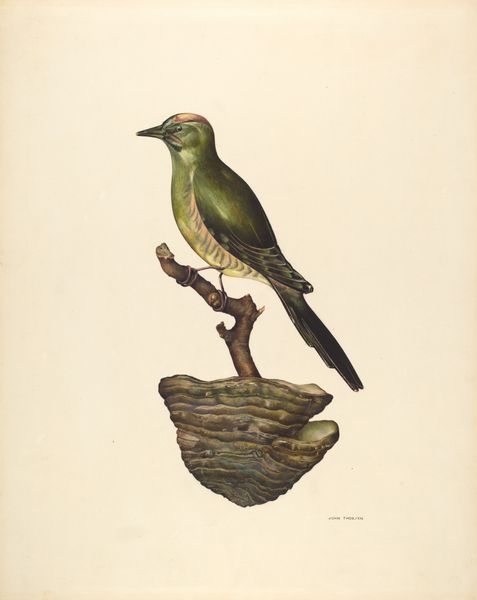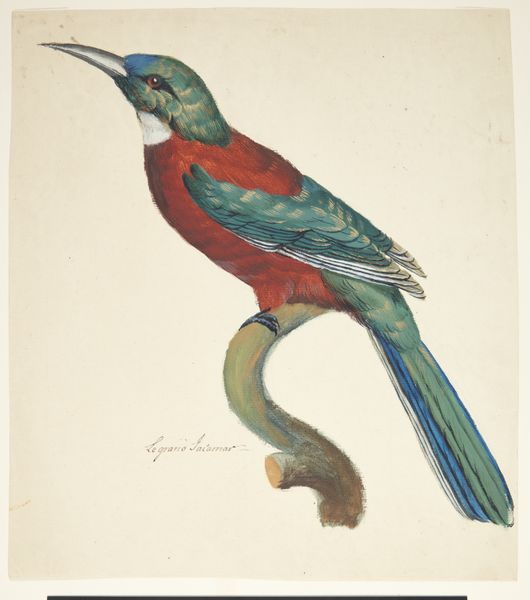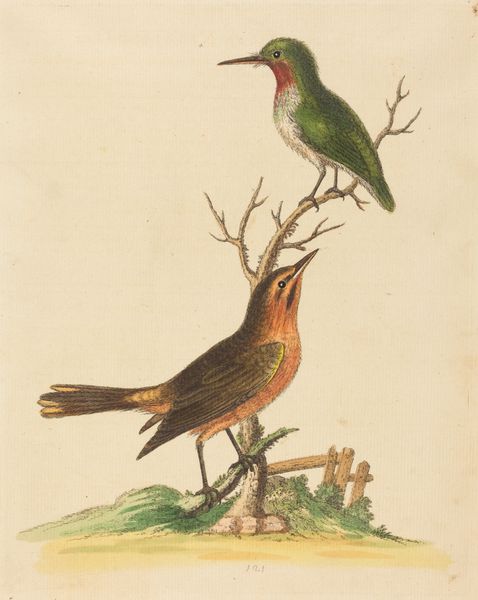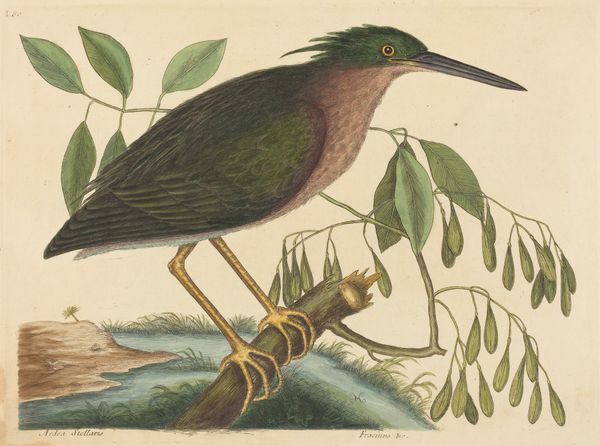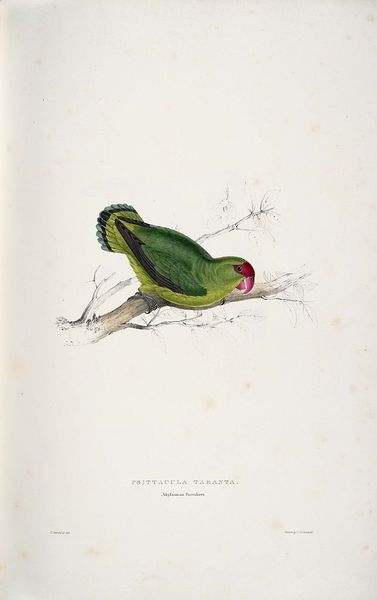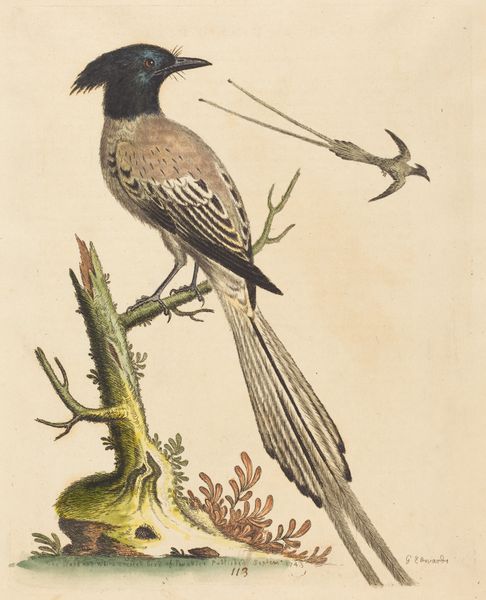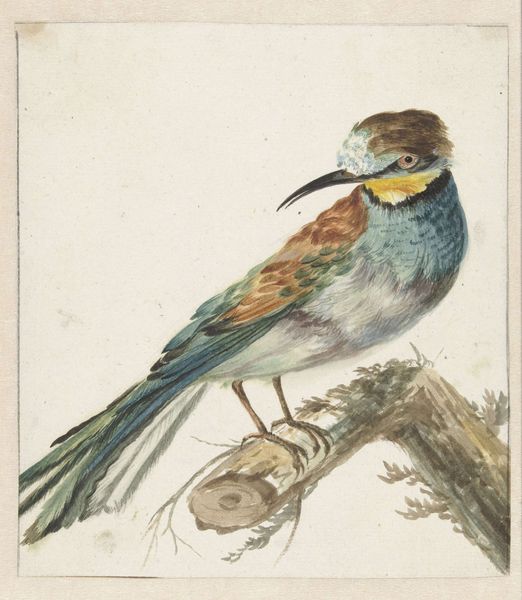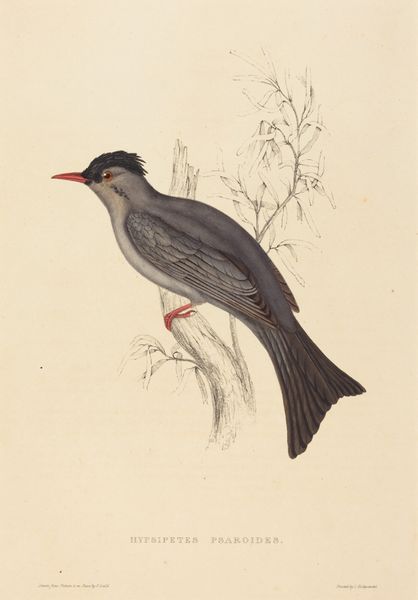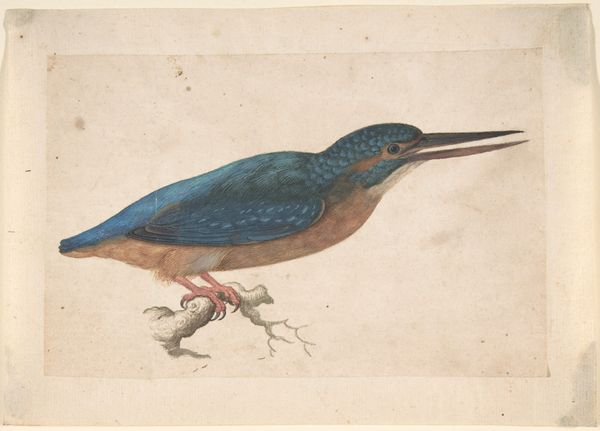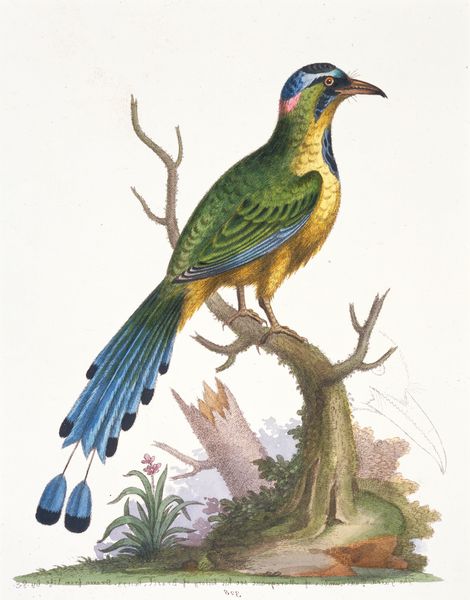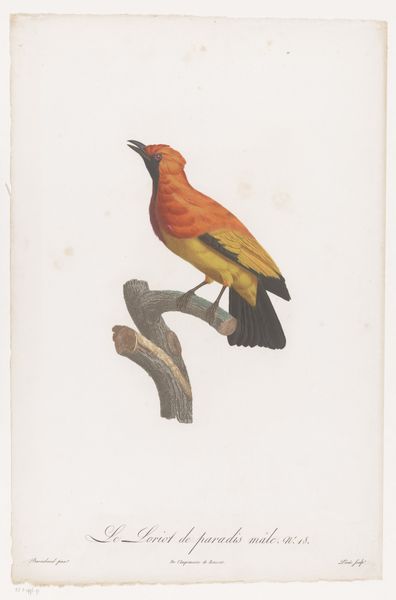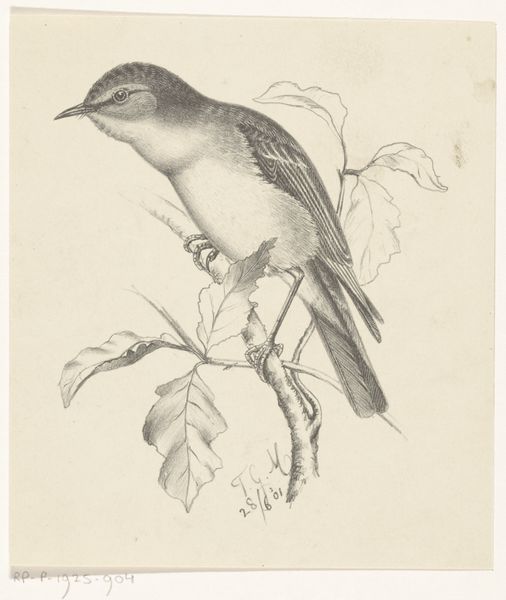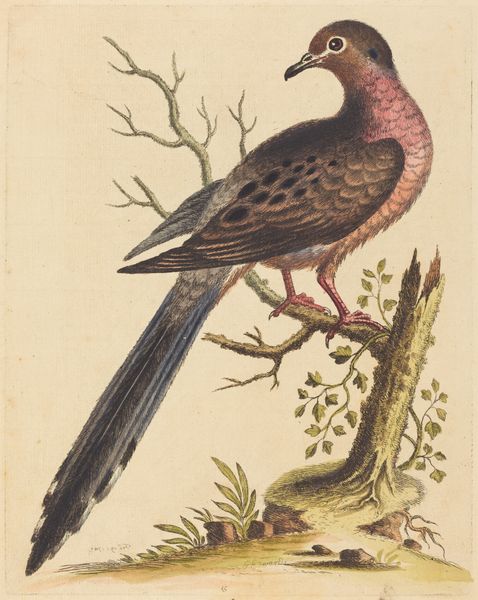
drawing, watercolor
#
portrait
#
drawing
#
landscape
#
bird
#
botanical illustration
#
watercolor
#
romanticism
#
botanical drawing
#
watercolour illustration
#
naturalism
#
botanical art
#
watercolor
Dimensions: height 450 mm, width 346 mm
Copyright: Rijks Museum: Open Domain
Curator: Well, isn't he handsome? Editor: Indeed. A bit severe, though. Something about that intense gaze. Curator: This exquisite watercolor is "Mannelijke bijeneter op een tak," or "Male Bee-Eater on a Branch," crafted between 1801 and 1806 by Jean-Baptiste Guyard. It's part of the Rijksmuseum's collection, and frankly, I think it's utterly charming. What do you think strikes the eye first? Editor: The precision, undoubtedly. Look at how Guyard renders each feather with such delicate lines and nuanced washes of color. The formal structure almost mimics a scientific illustration, categorized and meticulously observed. It verges into Romanticism, with nature as the all-seeing and benevolent deity. Curator: Precisely! It’s like Guyard got completely lost in observing the bee-eater's colors and textures. It goes past just a pretty picture, don't you agree? You can almost feel him spending countless hours absorbed in the details. I bet he had quite the emotional relationship with this feathered fellow. Editor: I appreciate your point, and certainly, the subjective reading is pertinent here. Though I think it leans into an intellectual engagement with nature. But what intrigues me, is how the twig cuts across the space so starkly, dividing the delicate, feathery textures of the bird from the bare, stark paper, leaving it looking fragile. Curator: True, it’s a delicate piece that really captures the sort of almost fragile beauty of this colorful creature. Perhaps he knew about this guy and had some bee-eater encounter of his own, you know? A personal memory captured on paper. Editor: It also offers a visual insight into the broader context of its time, during which natural history and the pursuit of knowledge were deeply interwoven. To consider Guyard's bee-eater within its historical scientific frameworks shows that it reflects humanity’s persistent effort to categorize and analyze its surrounding world through both observation and artistic means. Curator: Absolutely, and viewing it today—stripped from its intended place inside some old bird book somewhere—feels almost poignant. A perfect reminder of how our ways of understanding nature continuously morph, shift, and deepen. Editor: Ultimately, this piece encapsulates the beauty of observation meeting artistic skill and a profound interest in our surrounding nature, so rendered, as it lives beyond it's time, and on to new and eager eyes.
Comments
No comments
Be the first to comment and join the conversation on the ultimate creative platform.

